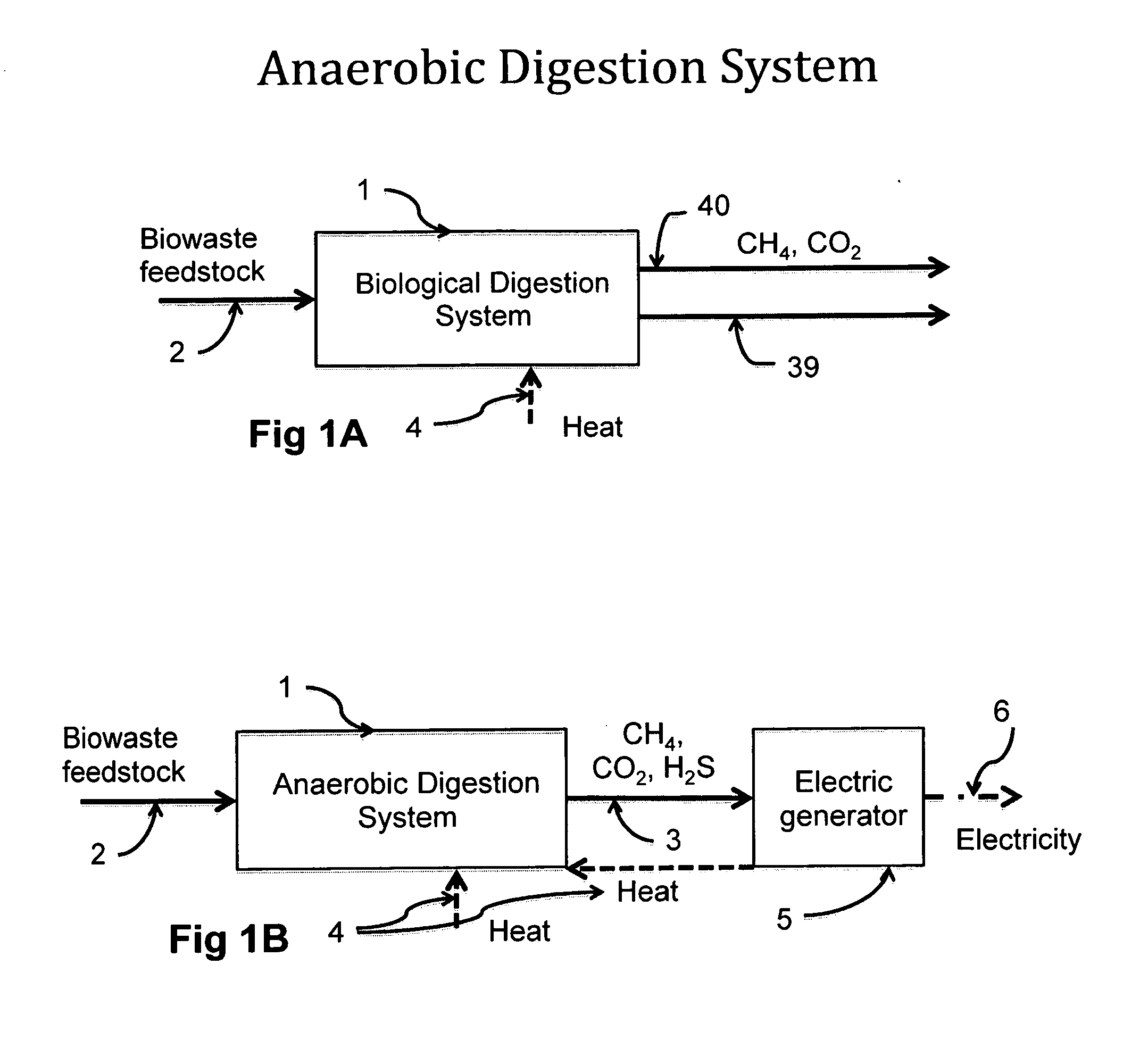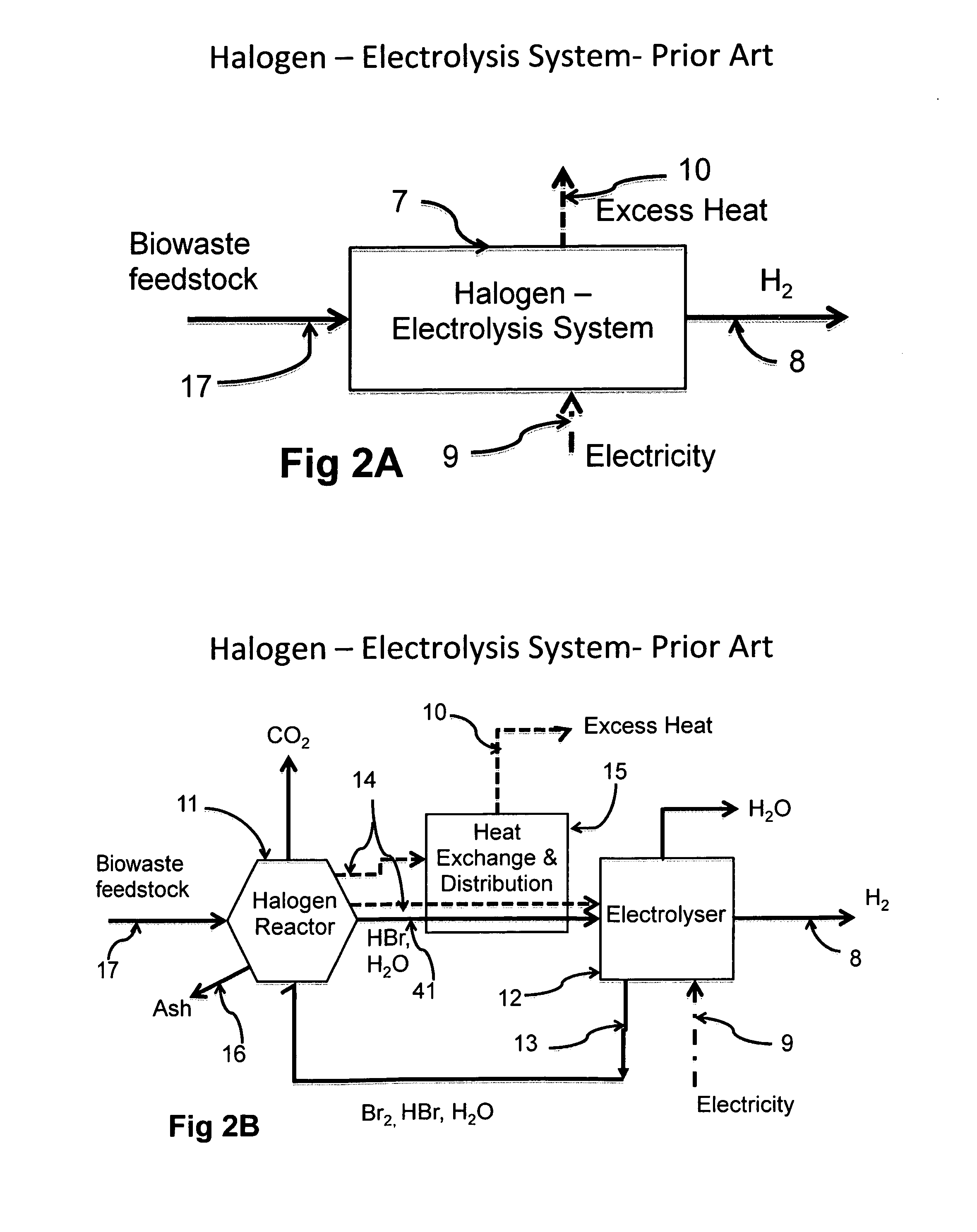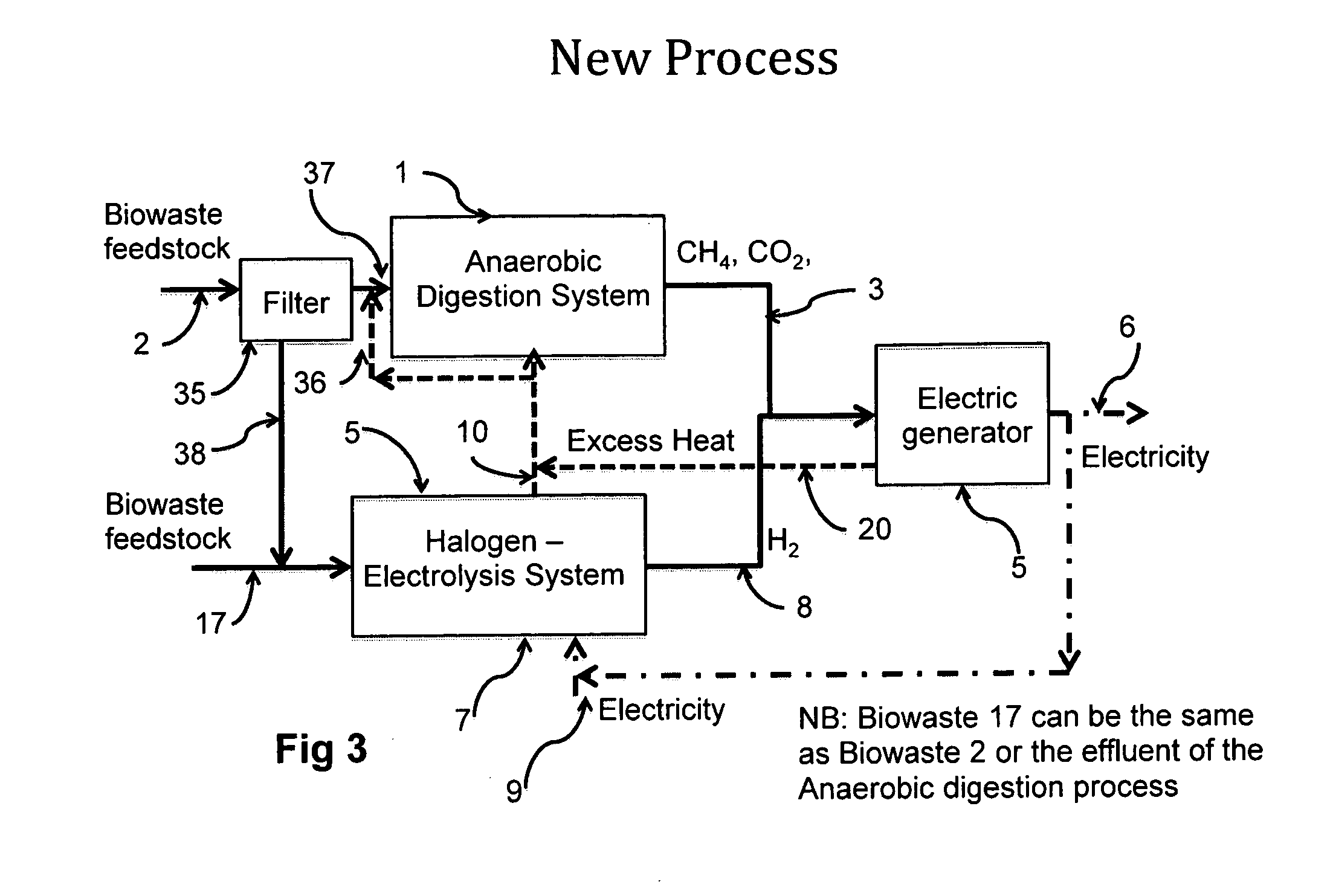Biological solids processing system and method
a processing system and solids technology, applied in the field of biological solids processing system and method, can solve the problems of increasing maintenance costs of the facility, reducing the efficiency of the process, slowing the overall conversion of feedstock to energy, etc., and achieves low volatility, high digestion, and optimized energy extraction
- Summary
- Abstract
- Description
- Claims
- Application Information
AI Technical Summary
Benefits of technology
Problems solved by technology
Method used
Image
Examples
example 1
Dairy Cow Operation
[0094]This example (described in the FIGS. 4A to 4C) outlines the process of the present invention as it is applied by way of example to a dairy operation comprising 500 cows. A 1400-pound dairy cow produces up to about 115 pounds of manure per day. This amount of manure, if left unmanaged, will release considerable amounts of methane (a much more potent greenhouse gas than CO2). The waste from 500 cows introduces an estimated equivalent of 2750 tons of CO2 per annum. Rather than contribute to greenhouse gases this manure can be advantageously used to provide usable energy for transportation, heat, and / or electricity.
[0095]An example of a conventional anaerobic digester is operating in a climate with an average temperature of 20 degrees Celsius. Due to the lower temperature the digester retention time is 45 days so the digester must be able to retain at least 3000 cubic meters of manure feedstock. The combination of the low average temperature and a widely variabl...
example 2
Food and Beverage Waste. Spent Brewery Grain
[0101]This example as outlines the process of the present invention as it can be applied to a brewery operation that produces beer having an average alcohol content of approximately 5% and a capacity of 500 barrels of beer per day. At 80% brewery mash efficiency this equates to about 50 pounds of Brewers' Spent Grain (BSG) per barrel of beer, or around 11 metric tonnes of spent grain per day.
[0102]This process is best illustrated with the embodiment of FIG. 4B. Since the feedstock (2) (spent grain) needs no additional filtering, it can be fed into the Anaerobic Digester (1) after applying the heat (36) from the Halogen Electrolysis System (7) to facilitate the initial warming for thermophilic digestion. In this example the Halogen Electrolysis System (7) is fed by (17), which in this case is the effluent from the Anaerobic Digestion System (1) Once the available heat has been transferred, additional heat can be applied to the feedstock (2)...
PUM
| Property | Measurement | Unit |
|---|---|---|
| temperature | aaaaa | aaaaa |
| temperature | aaaaa | aaaaa |
| temperature | aaaaa | aaaaa |
Abstract
Description
Claims
Application Information
 Login to View More
Login to View More - R&D
- Intellectual Property
- Life Sciences
- Materials
- Tech Scout
- Unparalleled Data Quality
- Higher Quality Content
- 60% Fewer Hallucinations
Browse by: Latest US Patents, China's latest patents, Technical Efficacy Thesaurus, Application Domain, Technology Topic, Popular Technical Reports.
© 2025 PatSnap. All rights reserved.Legal|Privacy policy|Modern Slavery Act Transparency Statement|Sitemap|About US| Contact US: help@patsnap.com



